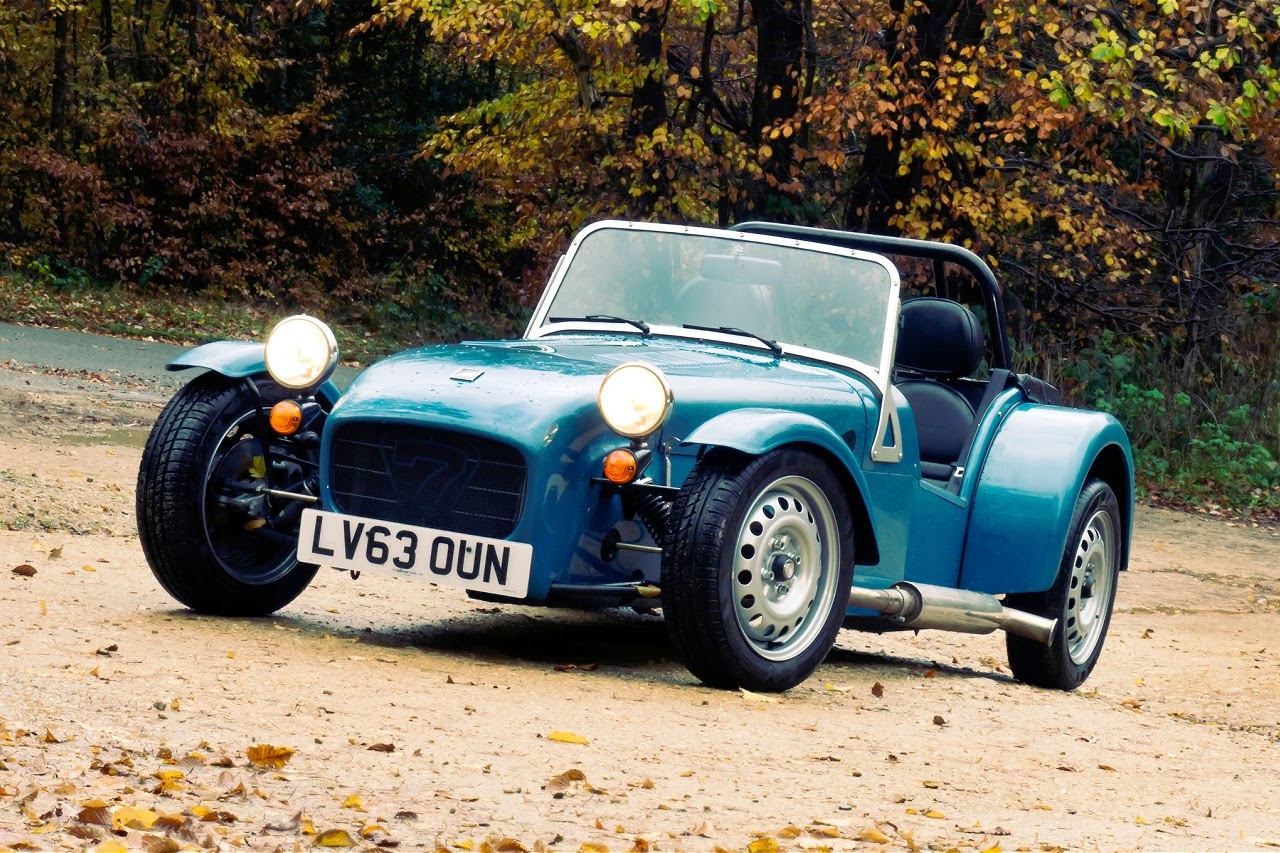Crawley, England - Caterham has built some pretty fast cars since 1973, when Colin Chapman sold it the rights to the seminal Lotus Seven design. The wildest of these must be Caterham’s latest, the 620R. With a 2.0-liter supercharged Ford Duratec four-cylinder huffing up 310 hp, this atomic roller skate reaches 60 mph in 2.8 seconds, Caterham says, and will likely spend much of its time deeply sideways. But we’re not here today to talk about the 620R.
It is important to remember that when the Caterham Seven’s revered ancestor launched fifty-seven years ago, it was a lightweight machine with an awesome chassis and deeply dull power from Lilliputian English Fords, just enough to entertain, but no more. Which is exactly why the new 160—one of the least powerful Caterhams ever and the cheapest in years—makes such a fascinating piece. Like its more powerful brethren, it is a time machine, but it alone harks back to the time when sufficient power and a rigid, really fun tubular spaceframe chassis was what you got for your money. The 160 is also the lightest Caterham, and it sounds almost affordable at $28,900 for a basic kit (sans engine and transmission), which is available to order in the United States. (The 620R is, too, but will cost closer to $75,000.)
I find it hard to say mean things about the 160, which is without doubt a lot less car than you, whoever you are, will be used to. You could call it decontented, but I won’t hear you, because anything on skinny-mini tires that weighs next to nothing already has me weeping loudly with tears of joy. Whether it takes 6.5 seconds to reach 60 mph, as Caterham claims, or 8.4 ticks, as Autocar found, in admittedly horrendous weather, is of little matter.
Speaking of foul weather, when we arrived at the train station in Crawley, West Sussex—a four-minute walk to the Caterham sales headquarters—it was raining. But the sun was threatening to poke through, so we decided to brave the roads with side curtains up and top down. How were we to know that the sun would withdraw its threat and the skies would open up? Bitterly cold, driving rain was followed by large and extremely painful hailstones. We pressed on for an exfoliating hour, and the weather improved.
It could’ve been worse. As a grizzled veteran of fifty-year-old British car design, I was delighted to learn that the 160’s climate-control facility actually made a difference. Wipers, in conjunction with an internally heated windshield, cleared the view. The heater puts up a valiant fight, too, but it costs $500 or so. Lest there be any doubt, these Caterham guys are out to make a profit; don’t be surprised when you learn that the easy-to-swallow $34,000 base price (for a rolling chassis plus the powertrain) is basic indeed. The full weather equipment we’d recommend—which includes the windshield—will set you back about $1800. The formed side curtains included in the package are kind of ingenious in their functionality, ease of use, and apparent durability. By the looks of the rear fenders, completely slimed with leaves and road grime, I ought to be covered myself. But I am merely bruised by hailstones from above.
I defy anyone to say the 160 isn’t fun on winding country lanes. Steering is legendarily quick, with 1.9 turns lock-to-lock, meted out through a tiny but perfectly sweet (and needless to say, optional) Momo wheel, with feel through the fingertips such as you’ve read about in books. The solid rear axle is live, rude, but not crude with a five-link design, including twin trailing arms, a Panhard rod, and coil springs. Brakes are small but adequate, with tiny drums at the rear.
Gearing is not always optimal and the engine is busy—almost 4500 rpm at 70 mph—but not dislikable, and when you think about its 660-cc displacement, how could it be otherwise? On a wet day, Suzuki’s twelve-valve K6A three-pot will still chirp the skinny Avons in gears one through three. Whereas a Morgan 3 Wheeler’s V-twin feels like a bank safe full of cluster bombs going off in front of you, the 160 is so silent and smooth at idle, even with a butch side exhaust to spread its good word, you look to its mini tachometer for proof that it hasn’t stalled.
With more than 8000 miles under its very trim belt, our test car exhibited nary a clunk or rattle, although as a press car (finished in a very handsome heritage blue, a $2500 option) it likely benefited from having its nuts tightened every night. Fella, if you had one of these for your evening commute, you would, too.
2014 Caterham Seven 160
On Sale: Now
Price: $34,000 (est, unassembled)
Engine: 0.7L: turbocharged I-3, 80 hp, 79 lb-ft
Drive: Rear-wheel
Est. Fuel Mileage: 32 mpg combined
Source:
By Jamie Kitman
Photos by Martyn Goddard
2014 Caterham Seven 160

















0 komentar:
Post a Comment